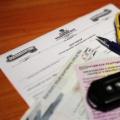After last year's operation of Koito White Beam III H7 white lamps, more precisely after this torment, and then after the operation of collective farm xenon, I clearly decided for myself that the lamps in the low beam should be bright yellow for better visibility in any weather conditions.
I skated autumn, winter and spring with Koito. Guys, if you want normal lighting, do not try to take these expensive lamps. They do not shine at all, even on slightly damp asphalt. And if it's raining decently, you don't have to turn on the headlights at all, there is no difference, whether they are on or off. Then the yellow spectrum lamps in the PTF of the MTF Aurum brand came to my aid. I put them with increased power 55W versus 35W standard. Report. They shine, by the way, clearly better than the regular ones, and were very useful in last year's bad weather. A year later I will say that nothing melted, everything works as before.
After a little experience with xenon in summer time years decided for myself that xenon should only be regular. No collective farm. Therefore, I began to choose lamps with a yellow glow spectrum.
I chose between Osram all season, MTF Aurum, IPF XY73 YELLOW. There are a lot of reviews about the first lamps, but there are also enough negative ones, supposedly the glow spectrum of these lamps is only slightly different from the standard ones. And I wanted exactly the bright yellow lamps. I'm already familiar with MTF, they are in tumanki. The lamps are Korean, not bad, but there is one drawback that annoys me a little. The light from them is pale yellow, and the lamp in the headlight shimmers with all the colors of the rainbow during operation. No color uniformity. I do not know how in the lenses, but in tumankas they look exactly like that, iridescent in incomprehensible colors. Further Japanese IPFs. According to reviews, very cool lamps, the color of the glow is exactly what we would like. But they are unreasonably expensive (2500r). And like all other lamps, consumed by 55W and supposedly shining at 110W, they quickly burn out. I don't know, maybe I'll crush a toad later and buy these, but not yet.
While reading another review about Osram Alsizon on some website, I came across a comparison with Hella Yellow lamps, and as the author described, he liked the latter much more. In addition to this review, I could not find information on Hella lamps anywhere else. The brand is well-known and good, I decided to give it a try. Found the code, ordered in existential. A pair of lamps cost 500r. Full name of H7 lamps Hella lamp 12V 55W yellow spectrum Yellow (PX26d), order code 8GH 007 157-481

Lamp box
The bulb of the lamp, as in the case of MTF and Osram, is yellow, but unlike MTF, the spectrum is uniform, bright lemon-yellow, not pale like that of MTF.
I have been testing these lamps since the end of summer and I can say the following: in dry weather, the illumination from these lamps is slightly better than the standard ones. But with the arrival of bad weather, all the charms of the Hello lamps begin to appear. It punches everything just fine. Wet asphalt illuminates very cool. The brightness of the lamps, in my opinion, is greater than that of the standard ones. Compared with the standard light of the seeds, neighbors downstream. I noticed that the light spot became closer to the bumper, the need to turn on the PTF disappeared. And without them, everything can be seen perfectly. In general, I am satisfied with the lamps, in the future I will probably put the same in the swivel and distant ones.
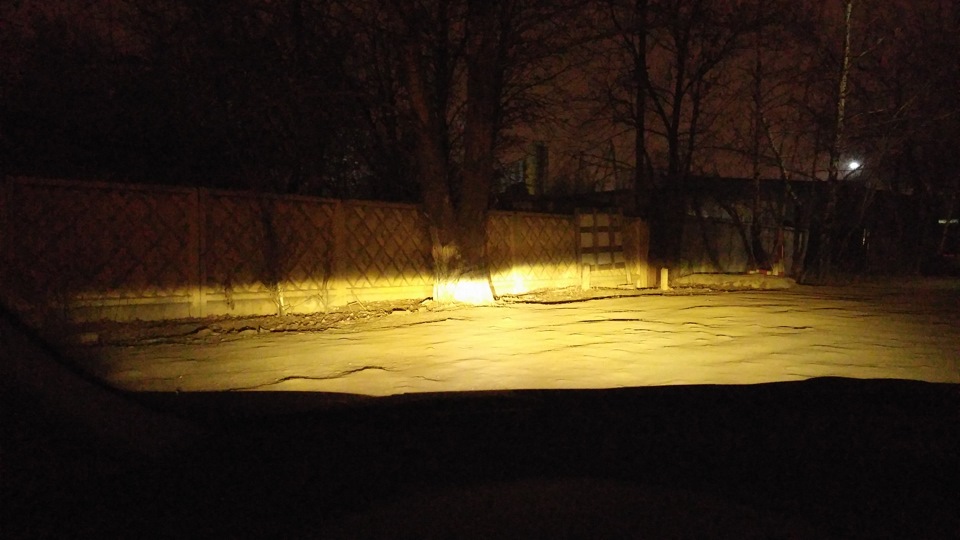
The most correct glow color, close to real
Gas-filled bulbs from japanese company IPFs are used on the road under various conditions. In this article, we would like to consider light bulbs with a yellowish light or a rich yellow beam, which provide maximum effect it is in bad meteorological conditions, although it can be practical at night.
Why is yellow light more effective in bad weather?
It is believed that in poor weather conditions, yellow light is much more effective.
This is due to the fact that:
- The yellow light is not scattered along the road surface, therefore it provides a uniform and uniform beam spread.
- A yellow stream, unlike white light, is not characterized by reflection from wet asphalt, which is very important in wet weather or in heavy, torrential rains.
- Warm light does not crystallize from moisture droplets, which is important in fog.
- The peculiarity of yellow light is that it penetrates, passes through the fog, through the rain, and therefore guarantees a better visibility of the roadway.
- Lamps with yellow light are better perceived for human eyes in bad weather, and this also affects increased security on road.
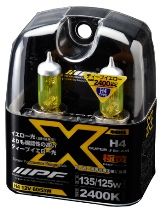
Deep Yellow - perfect yellow light
The lamps of this model have a rich yellow light with a temperature of 2400 Kelvin. These light sources are ideal for use in bad weather and are best mounted in fog lights.
The lamp model not only has efficiency in bad weather conditions, but also serves as a device for vehicle modernization. This is not just yellow light, but it is as saturated as possible, also thanks to the yellow color of the bulb. Thus, the lamps provide the uniqueness and visibility of the vehicle, expressiveness, which is both a modernization and an increase in safety on the roadway.
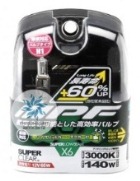
Super Clear X6 - Long Life
A lamp that has a yellowish light with a temperature of 3000 Kelvin. This model features not only a yellow light, ideal for use in bad weather, but also other features. This model The lamp has up to 60% increased service life due to high-quality construction, durable glass of the bulb, as well as an elongated and reliable filament.
The source can be used both for bad weather and at night, since the light is very pleasant to the eye and does not affect fatigue during long trips.

Super Clear - practicality and quality
A high-quality series of lamps that will be stunned by a yellowish light at 3200 Kelvin. Such lighting devices are as similar as possible to the parameters of standard halogen lamps, but they have great advantages:
- Durable filament - long and thin.
- Reliable glass of the lamp bulb.
- Not afraid of vibration.
- Provides maximum brightness.
Features and characteristics of compared lamps
| Parameters | Super Clear X6 - Long Life | ||
| Start of production | 2009 year | year 2013 | 2003 year |
| Plinth | H1, H3, H4, H7, H8, H11, HB3 / HB4 | Н3, Н4 (series XX), Н11, НВ3 / НВ4 | |
| Colorful temperature | 2400 K | 3000 K | 3200 K |
| Power | 35W-60 / 65W | 65W-60 / 80W | 65 watts Series XX - 60/80 W |
| Luminance class | 75 W - 135/125 W | 140W-130 / 150W | 130-170 Watt Series XX - 150/190 W |
| Using | In the fog lights. | In fog lights or low beam mode of head optics. | It can be used in head optics for low or high beam mode. |
| Light effect | The light travels through fog and heavy rain and therefore provides greater driver safety. | The light penetrates well through fog and rain, and also provides good visibility at night. | Warm yellowish light provides better illumination both at night and in bad weather. |
| Features: |
|
|
|
 | Possible disadvantages of IPF yellow light seriesDespite the high, quality, reliability of lamps, they still have some drawbacks that you should definitely be aware of. Disadvantages of yellow light bulbs:
|
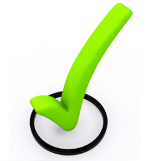
So why are these lamps better than halogen?
Gas-filled lamps, even with a yellowish light, which obliges when installing it in cars, still has more advantages compared to heavy halogen light sources:
- More reliable design - shelf life.
- Stable operation at all times, the filament is not afraid of the vibration impact of cars.
- More efficient light in bad weather conditions.
- Saturation and increased brightnesswhich provides better security for the driver.
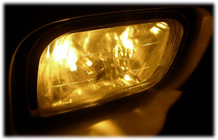 | Yellowish IPF lamps: advantages over xenonDespite the fact that xenon is by far the brightest, most saturated and the best light for car optics, you can still highlight the advantages of the series with yellow IPF light, such as:
|
What can we conclude?
Despite the fact that now there is a better quality automotive lighting, which is stable and lasts a long time, provides better brightness and saturation, lamps with a yellow effect from IPF remain relevant and in demand. Neither xenon nor halogen can handle fog better than the saturated and yellow lamps from IPF, especially the 2400 Kelvin range.

Remember when choosing IPF lamps:
- You do not have to change the standard light wiring.
- It can even be used in plastic headlights, but preferably with a high-quality reflector.
- Remember to match the lamp base and optics.
- When installing the lamp, be careful not to touch the glass with bare hands.
- The best place to install Deep Yellow and Super Clear bulbs is in the fog lights.
- To increase the service life of the sources, take care of the complete sealing of the car optics.
- To use gas-filled lamps with xenon inside the bulb, you do not need to buy an ignition unit and more optional equipmentrequired for xenon.
Technical part
Selective Yellow - color car headlights... The rules allow the use of both white fog lamps and fog lamps in a select yellow color on cars. At the moment in Japan and New Zealand, selective yellow is approved for use in the near and far headlights.
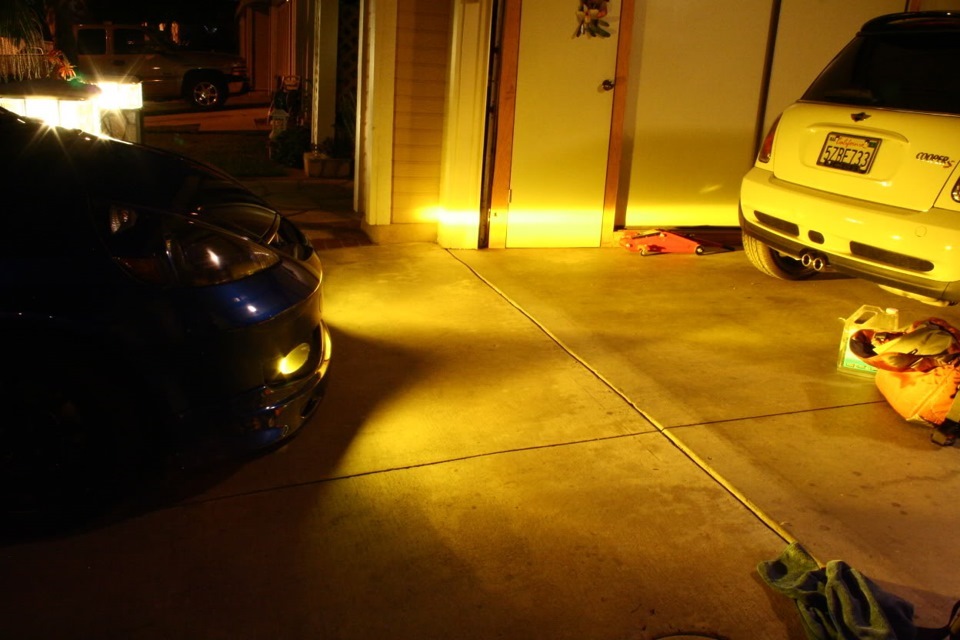
The use of selective yellow in headlights is due to its ability to improve visibility by removing the blue color of headlights, since light in the blue region of the range is difficult for the human visual system to perceive. Selected yellow is devoid of the effect of dazzling the driver from rain, fog, snow and does not create glare on a wet road.
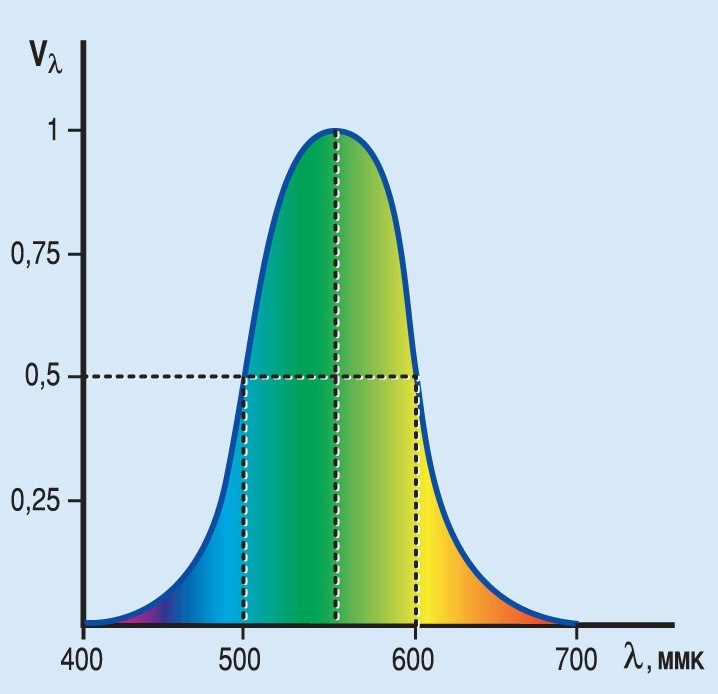
X-axis is the wavelength in nanometers; Y-axis - eye sensitivity
To obtain lamp bulbs and light filters of selected yellow color, glass with the addition of cadmium sulfide is used.
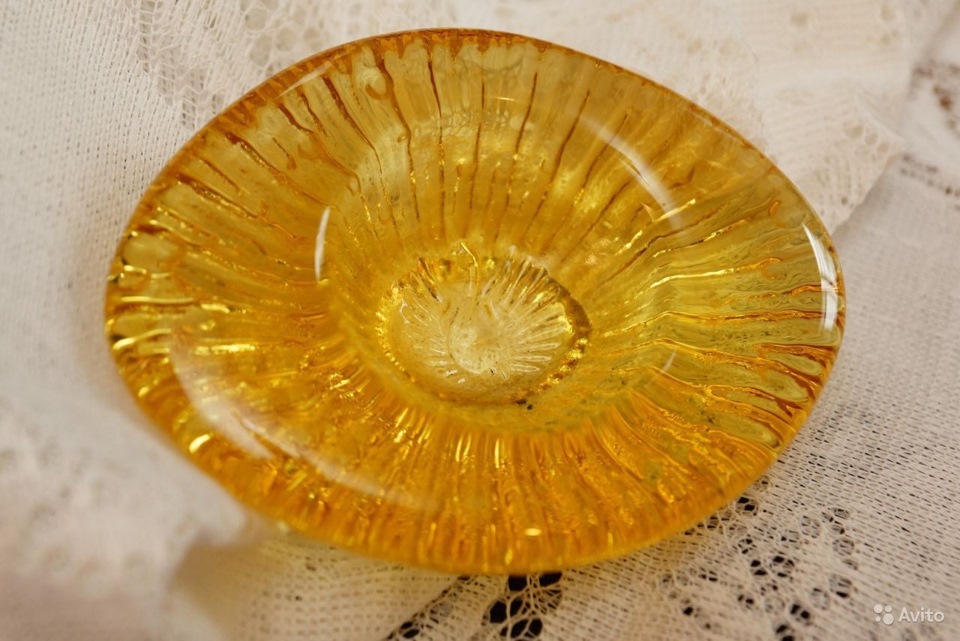
Soviet ashtray made of sulphide-cadmium glass
History
Les phares jaunes - spécificité française. Yellow headlights are French specific.
There is a legend according to which France began to use yellow headlights during the Second World War to distinguish its cars from the enemy. French Wikipedia writes about the same. However, in the same article, it is also written that France adopted a law on the use of yellow headlights long before the war - November 3, 1936. According to this law, the headlights of all vehiclemanufactured on or after April 1, 1937 should emit yellow light. The discussion suggests that this was done "for future use", fearing a German invasion. However, there is not officially a single document certifying the military origin of this decision.
Maybe it was intended to be convenient - to distinguish "friends" from "strangers" by the color of the headlights. However, "outsiders" used these differences just as successfully to their advantage - yellow headlights made the French easier prey for the Germans. By the way, in the same wiki discussion, it is noted that the Germans forced the French to use white headlights during the occupation.
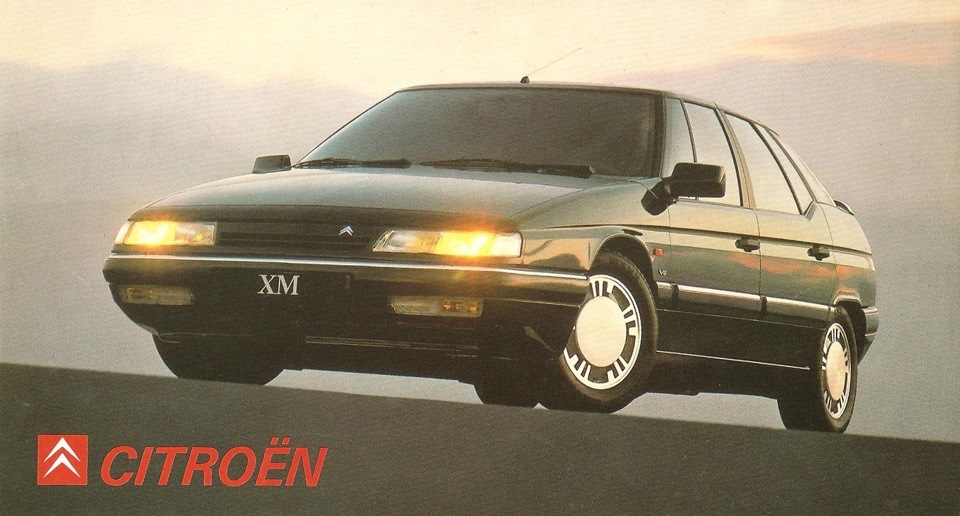

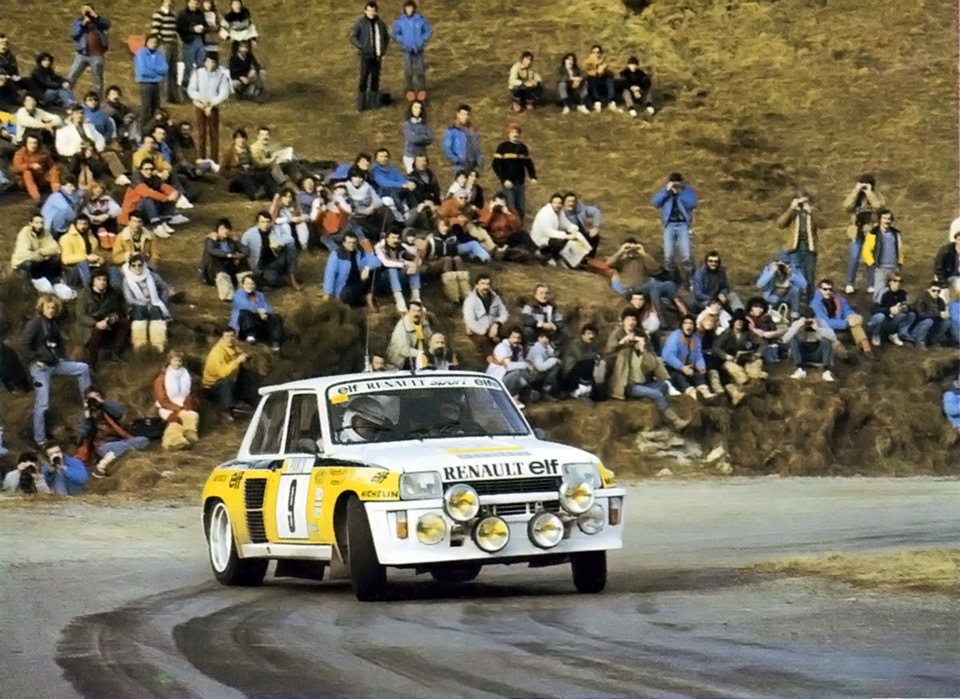
Reanult 5 Group B
The yellow color was returned to the French headlights by the end of the war. And the point is not even that yellow is "useful" in fog and does not create glare on a wet road. The unofficial, real reason was that the yellow headlights are a quirky Frenchness - a French thing, a feature, a national style.
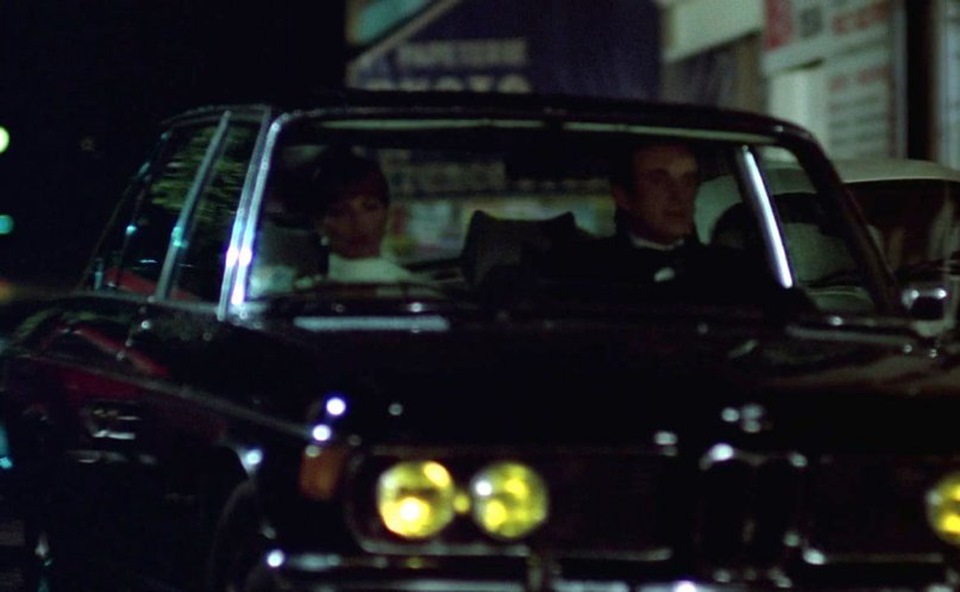
BMW looks the most colorful in my opinion

The Yellow Headlamps Act was repealed on January 1, 1993, as part of "greater European harmonization". And, if before January 1, 1993, foreign car owners entering France were obliged to use certain yellow clips ("yellow clips") on the headlights of their cars, then after that it was the opposite: yellow headlights were outlawed (excluding cars registered before 1993 years - they can safely continue to drive with yellow headlights.
I also want to. How to do it?
There are two main options:
- Lamp replacement
- Application of tint film to glass
- Painting the reflector
If a conventional incandescent lamp is used, then we simply replace it with a lamp with a yellow bulb. The one made of sulphide-cadmium glass. Here is a list of selected yellow lamps:
-
IPF Super J Beam Deep Yellow ... 2400K
-
PIAA Plazma Ion Yellow ... 2500K
-
PIAA Solar Yellow ... 2500K
-
Nokya Hyper Yellow 2500K
-
Solarzen Pure Yellow 2800K
-
MTF Light Aurum ... 3000K *
* -These bulbs are just more yellow than plain ones. The price tag is the most humane, but not at all that.
Report of our friend on chord, on the installation of IPF lamps:
www.drive2.ru/l/679563/
Xenon is more difficult. We can say that the only option is the Philips 85122YX xenon lamps. However, this lamp is rather scarce, expensive and is intended for installation only in lenticular optics with a D2S base. By the way, it is impossible to realize a xenon lamp with the color temperature of the selected yellow that we need, so special glass is used to make the bulb.
In general, in the spring, I thought about how to slightly improve the illumination of the road with dipped headlights. In principle, there were enough standard lamps, there were Osram lamps with the usual transparent glass of the bulb, but I would like to better see the pits on the roads. Since I am not a supporter of dealing with a collective farm with xenon, and halogen lamps more power evil for regular headlights and the eyes of oncoming drivers, then it remains only to try lamps with increased luminous efficiency. After reading reviews on the Internet, I bought Japanese Koito lamps with a luminous flux temperature of 4200K, they shine with white light
after installing these lamps and a test night drive on an unlit road, it became clear that for 1700 rubles I received only a beautiful white light if you look at the headlights from the side, the illumination of the road did not get better, and even became a little worse, on the highway there is light from oncoming or the same passing cars interrupts the light from my headlights, even when I turned on high beam (there are factory ordinary lamps) then the near one somehow dissolved in the yellowish shade of the far one. Driving with such a light is, in principle, tolerable, but with standard lamps it was a little more comfortable in terms of the fact that the eyes were less strained on suburban unlit roads, and in the rain with white light, you generally go blind, only one road marking is visible and then if it is.
In the rain, foglights saved well, there I have IPF 2400K yellow lamps
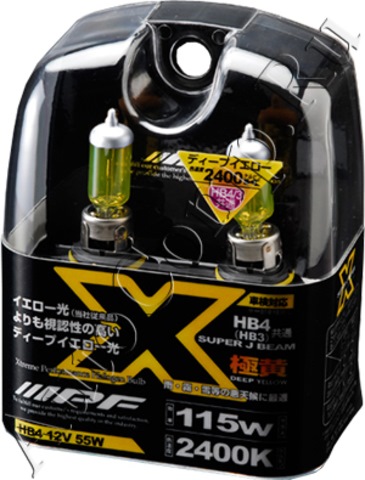
they shine with a frankly yellow light and also light up the road in lemon-yellow, and all the same, the fog lights should be fog lights, not flashlights, such lamps, in theory, should be installed from the factory on all cars equipped with fog lights)))
With the onset of autumn with rains and less daylight hours, it became finally clear that Koito lamps did not suit me and it was decided to change them to cheaper OSRAM ALLSEASON with a slightly yellowish bulb (compared to lamps in fog lamps).

These lamps are not expensive 300-350 rubles. PC. and as it turned out, they illuminate the road very well with a pleasant yellowish tint, the side immediately became clearly visible, the illumination along the entire contour of the light spot on the road seemed to become wider than with the koito, with white light the extreme points of the light spot on the asphalt were somehow pale. I haven't driven it in the rain yet, but I think that the road will be better illuminated than with koito, which honestly disappointed, I expected more from them, and maybe they just are not for me, since many write that koito shine amazingly and better than regular lamps. And I will probably buy a couple more all-weather lamps for a reserve.
That's all, bright roads to everyone.
UPD 10/31/14
A small addition for all-season holidays:
I managed to test the bulbs on a country road in fog and complete darkness, even in a thick fog, Osram allseason lamps, paired with yellow IPF in PTF, elegantly illuminate the road, yellow light very easily penetrates fog and illuminates the asphalt well and all its irregularities allowing you to drive without straining your eyes , of course, you won't accelerate quickly, since visibility is strictly limited by the contour of the low beam, but you don't have to trudge like a mole in milk either, but the neighbors on the road with white lamps crawled barely almost blindly. By the way, the road is now constantly illuminated and neither oncoming nor passing cars interrupt the light from my headlights.
What kind of headlights will help the driver when driving in adverse weather conditions - yellow or white headlights, and which of these two colors gives the best visibility? As a rule, the yellow color of the headlights is used only in fog lights, because it is prohibited for installation on the head lighting by the main provisions on the vehicle's permit for operation.
But pure yellow headlights, except for foglights, do not exist. Quite often, more modern halogen lamps are used in head optics, which give a yellowish tint to the glow. Xenon headlights provide cool moonlight, more close to white. And if we talk about which of them is better not in the color spectrum, but in terms of lighting, then xenon lamps provide the best visibility of the road in any situation.
The choice of headlight color - what is possible, what is not
The GOST standards state that the high and low beam of standard lighting equipment should have a white tint. But xenon and halogen lamps, as well as conventional standard optics, were replaced by lED headlightsthat give a yellow light without blinding the driver of an oncoming vehicle. In addition, LED headlights provide better visibility in bad weather in the dark, highlighting the car in fog and making it more visible. And this is a completely different level of security.
The efficiency of the fog lamps also depends on the color of the luminous flux. Modern ones are allowed for installation as additional lighting, and many of car owners integrate them just at the level of head optics. The use of yellow is due to the fact that it is directly related to the wavelength of the yellow hue. This property provides improved illumination, and since foglights can be used with low beam headlights, in case of poor visibility, drivers turn them on, providing themselves with a good view.
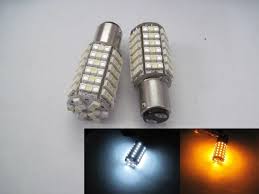 Along with yellow fog lights, white ones are also used, which have a longer illumination range and, along with yellow ones, are better able to "break through" a thick layer of fog. Manufacturers producing PTF today use this color to a greater extent. Greenish, red and blue foglights cope with illumination worse and in terms of functionality have long faded into the background. When choosing a color, it is worth remembering that fog lights are still a source of additional, not main, light. Therefore, to the question of which color of headlights is better - white or yellow, the answer will be unambiguous. White color preferable, and it is allowed by the regulations.
Along with yellow fog lights, white ones are also used, which have a longer illumination range and, along with yellow ones, are better able to "break through" a thick layer of fog. Manufacturers producing PTF today use this color to a greater extent. Greenish, red and blue foglights cope with illumination worse and in terms of functionality have long faded into the background. When choosing a color, it is worth remembering that fog lights are still a source of additional, not main, light. Therefore, to the question of which color of headlights is better - white or yellow, the answer will be unambiguous. White color preferable, and it is allowed by the regulations.

